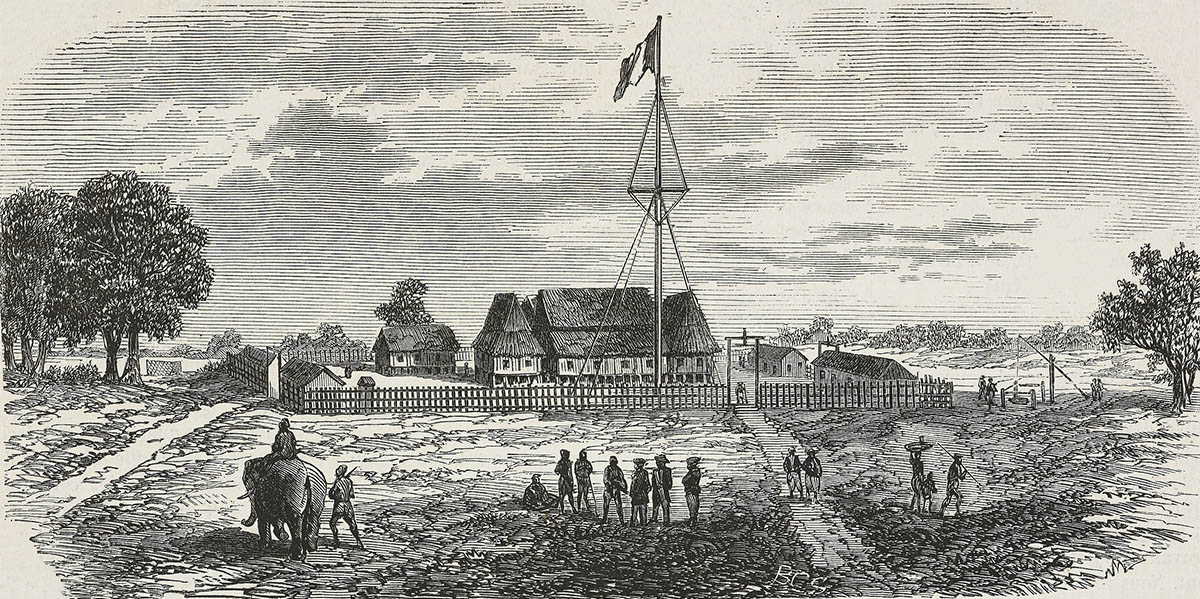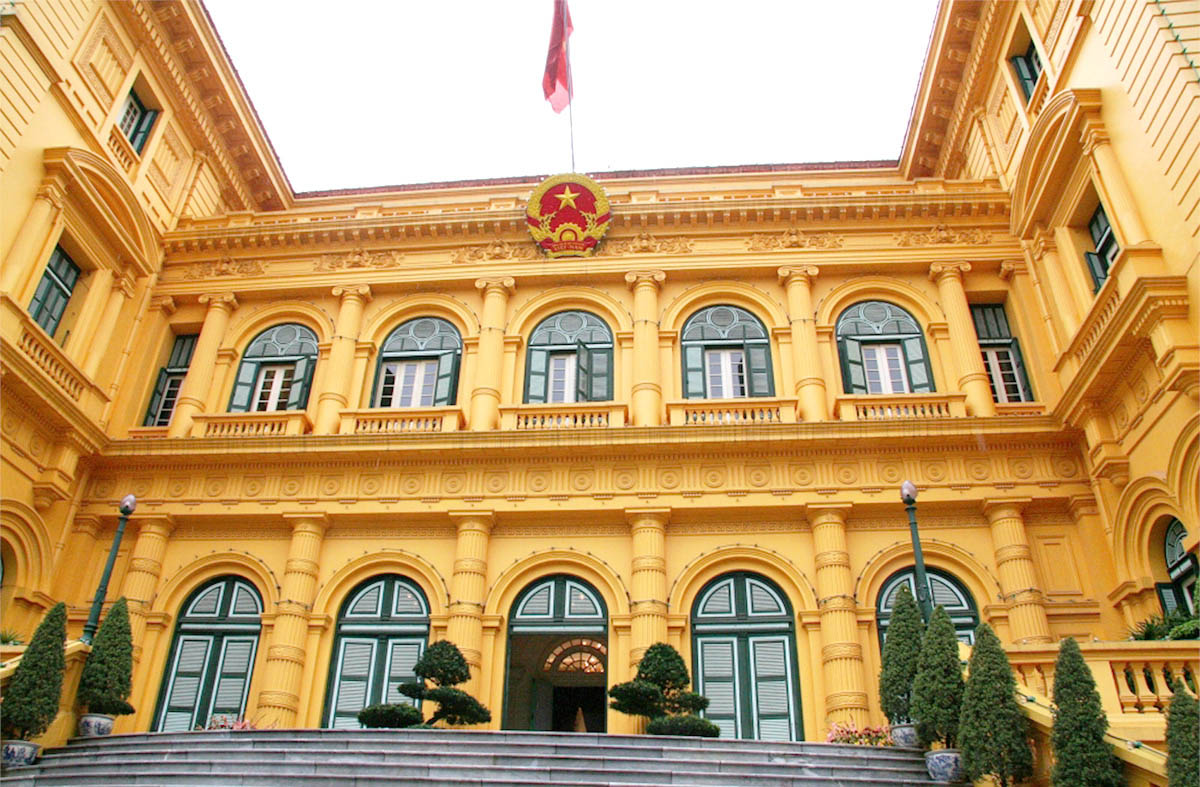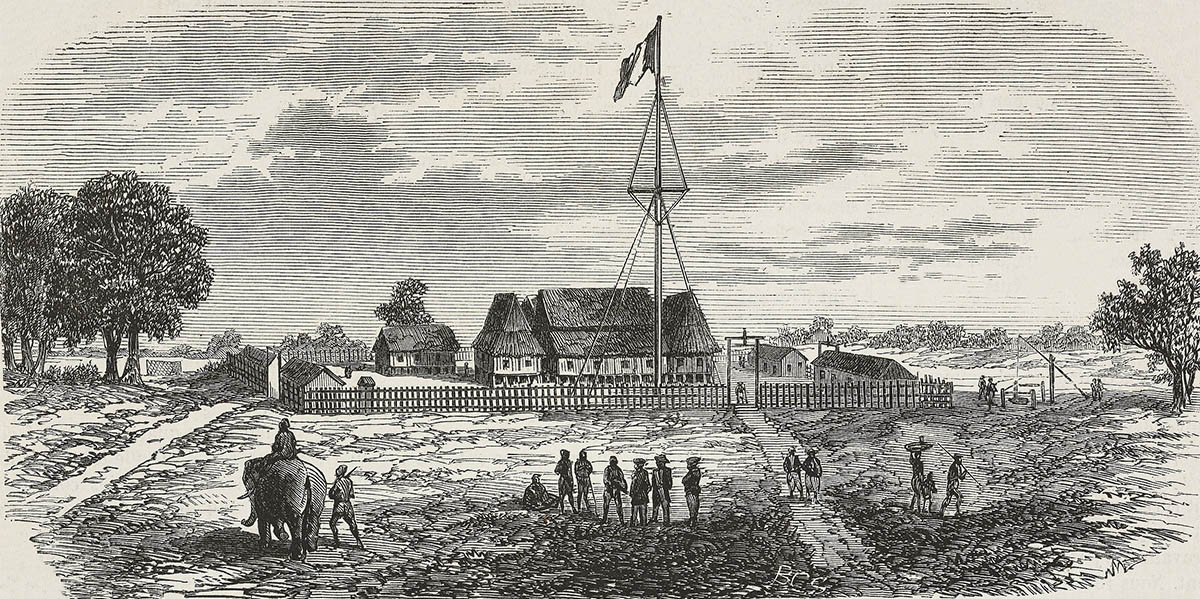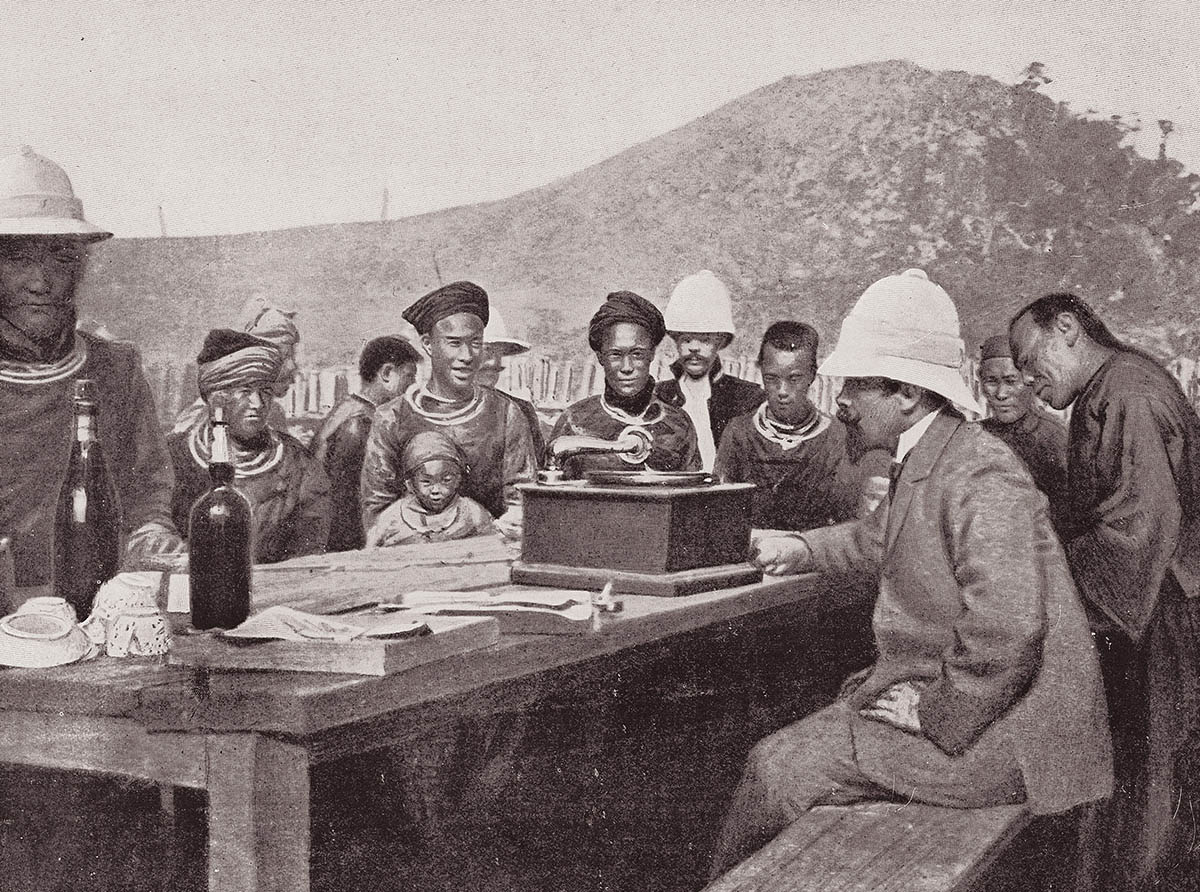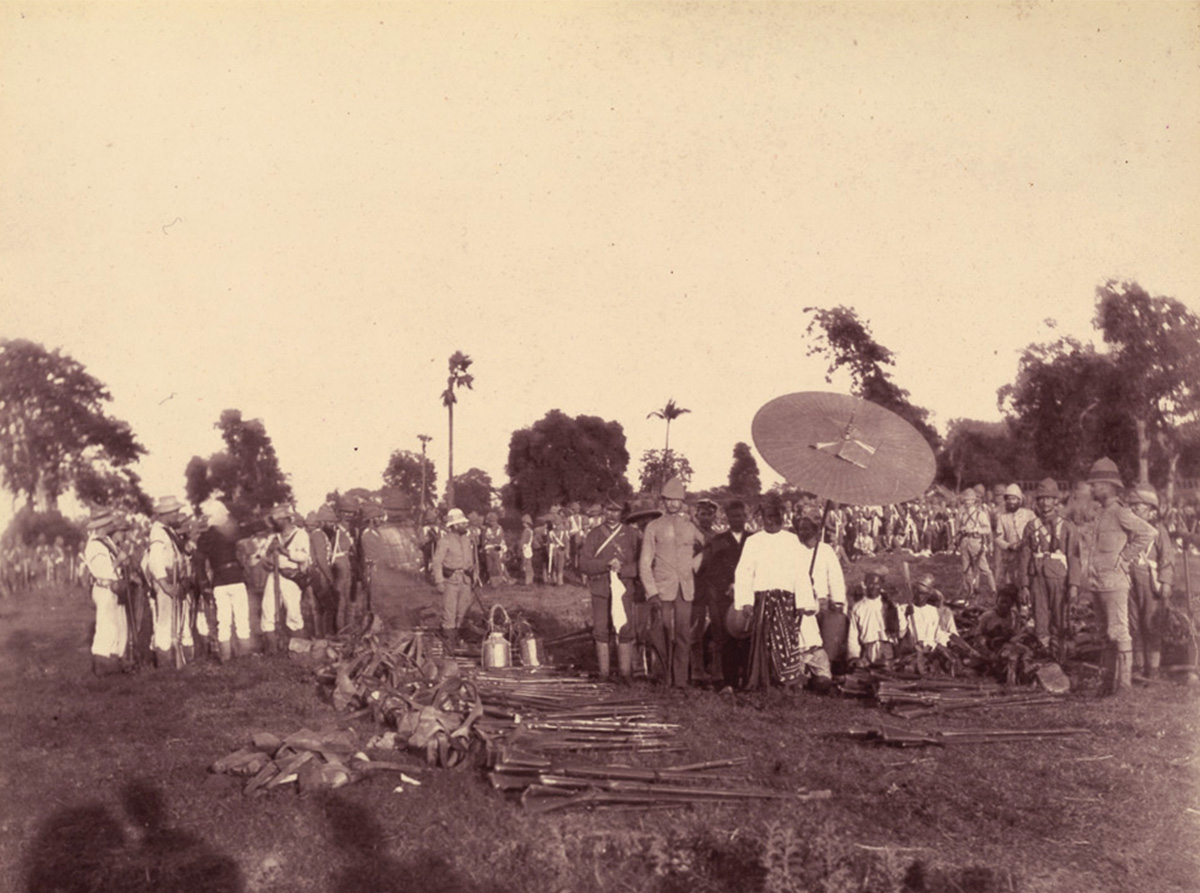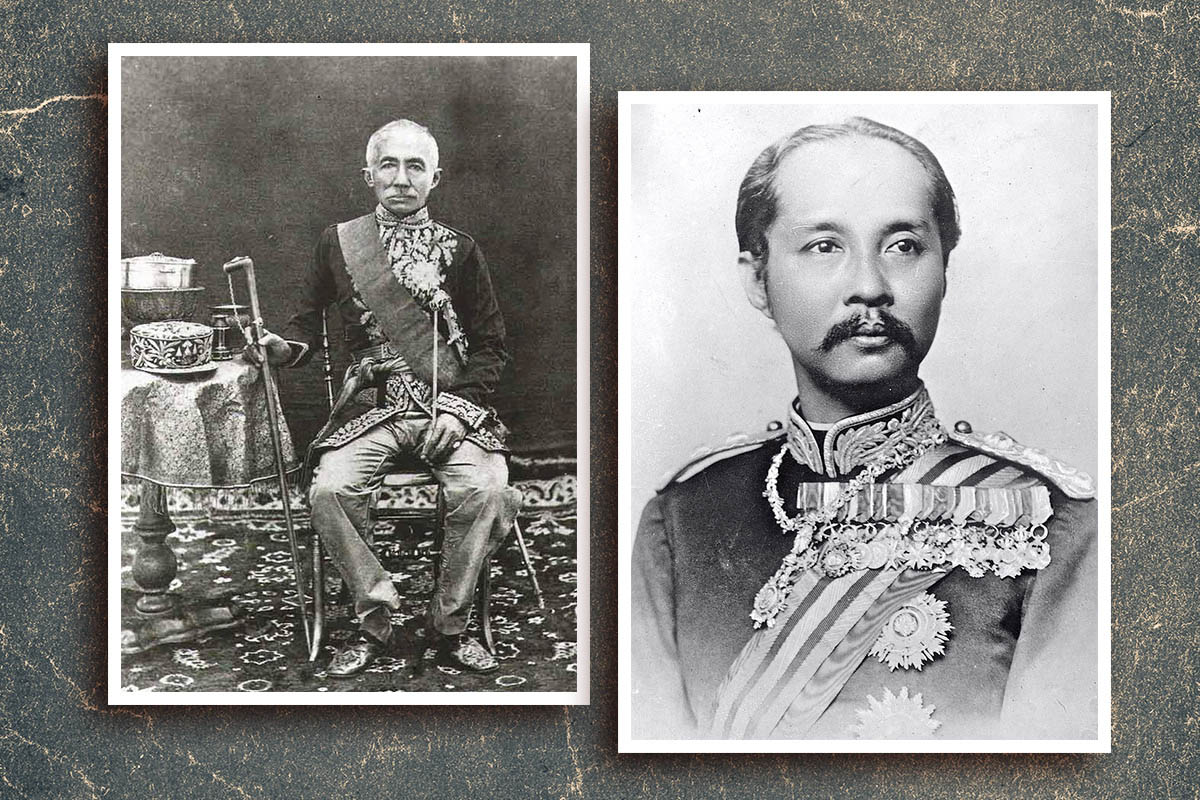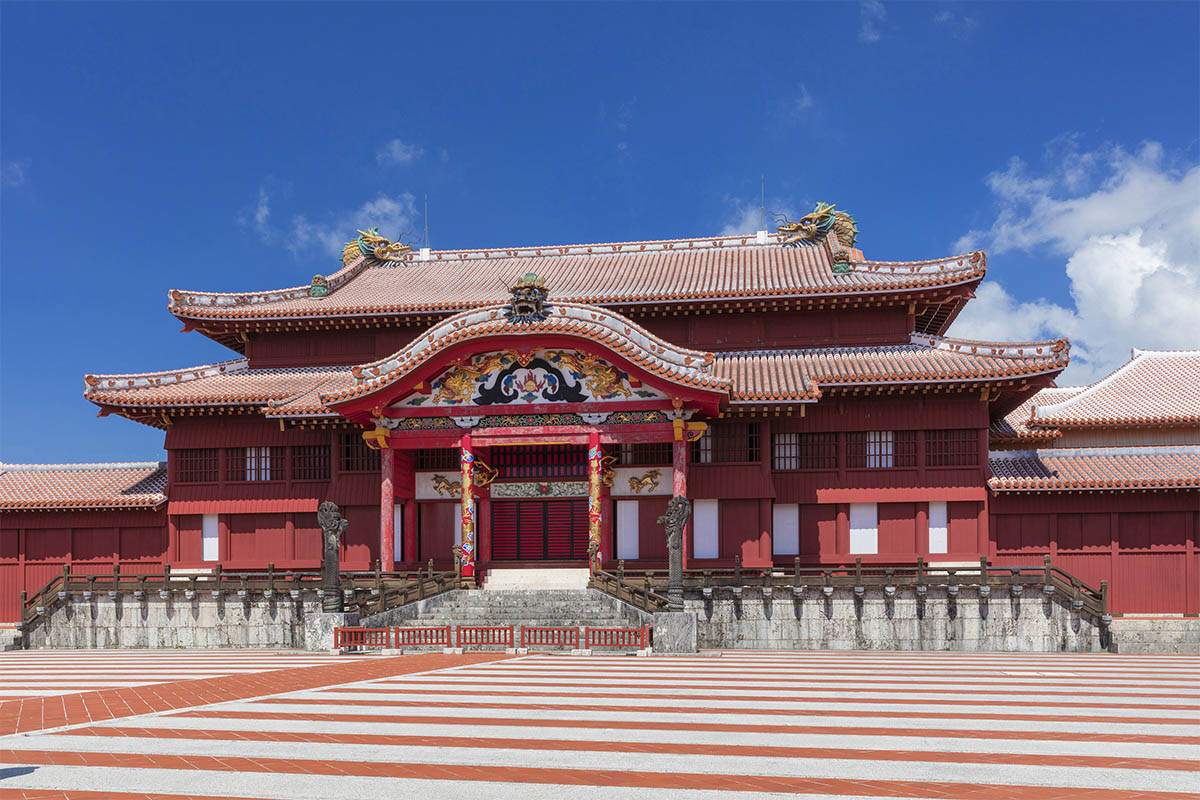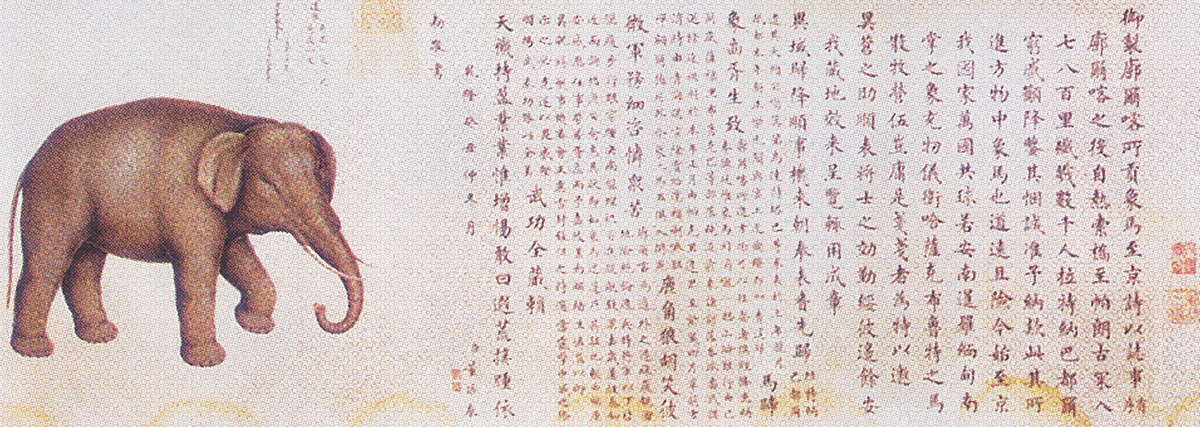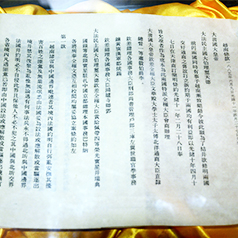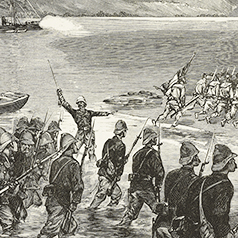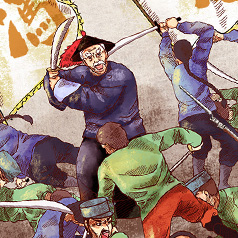Prior to 1840, China, as the self-proclaimed Supreme Celestial Empire, maintained a somewhat extensive tributary state system that boasted an array of vassal states ranging from Korea and the Ryukyu Kingdom in the east, to Vietnam, Siam, and Burma in the south. However, with its national prestige in a slump after the two Opium Wars, China’s ties with its neighbouring countries grew tenuous, and its tributary states started to slip from its grasp. In 1879, Japan annexed the Ryukyu Kingdom, which was China’s vassal and paid tribute to it in both the Ming and Qing dynasties. Ending the Sino-French War resulted in France obtaining Vietnam, China’s prized southern tributary state, an outcome that was particularly injurious to China. From their new base Vietnam in Mainland Southeast Asia, the French invasion forces could cut a straight path to the provinces of Yunnan (雲南), Guangxi (廣西), and Guangzhouwan (廣州灣, present-day Zhanjiang City ﹝湛江﹞), and draw these areas into their sphere of influence. Meanwhile, the loss of Vietnam marked the disintegration of the Sinocentric tributary state system. After the war, Britain and France both vied for a greater control over Mainland Southeast Asia; Russia and Britain strove to expand their territories in western China, and Japan plotted to seize Korea, China’s north-eastern tributary state, from its upcoming war with China.
|
|
How did the Sino-French War hasten the disintegration of the traditional Sinocentric tributary system in East Asia? |
|
|
See answer below. |
France officially colonised Vietnam under the Sino-French Treaty of Tientsin (《中法會訂越南條約》, Tientsin﹝天津﹞also known as Tianjin), and Saigon became the initial capital of French Vietnam. Pictured is the Ho Chi Minh City Post Office, also known as the Saigon Central Post Office. Constructed by the French between 1886 and 1891 and commissioned in 1892, it was the first French colonial era post office in Vietnam.
In 1902, France moved the capital of French Indochina from Saigon to Hanoi. Pictured is the Presidential Palace in Hanoi. It now houses the Vietnam government institutions.
Pictured is a French encampment in Cambodia in 1865. Cambodia became a French protectorate in 1863 and was merged with Vietnam in 1887 to form the “Indochinese Union” or the “French Indochina”. The union continued to expand as France acquired more territories.
In 1893, Laos became a French protectorate and officially seceded China’s suzerainty. It was then incorporated into the French Indochina. Pictured is Albert Sarraut (seated figure wearing a white hat), the governor-general of the French Indochina, on an inspection trip in Laos in 1912.
France’s successful acquisition of benefits in the Sino-French War prompted Britain to procure Burma, a south-western tributary state of China. Pictured is the Burmese army surrendering to the British army in the Third Anglo-Burmese War in November 1885. The war, which took place just five months after the signing of the Sino-French Treaty of Tientsin, ended with Britain annexing the whole Burma.
Two Siamese kings renowned for championing reforms in Siam between the mid-19th century and the early 20th century: (from the left) King Rama IV and King Rama V. Siam was a key tributary state of China in Mainland Southeast Asia. As foreign interference grew, the Sino-Siam relationship gradually changed. In 1869, Siam requested China to waive the tribute and establish a normal diplomatic relation with it as a country of equal standing with any Western nation. Despite China’s objection, Siam stopped paying tribute anyway. As there was nothing the Qing government could do about it, the tributary relationship between the two came to an end.
Siam (present-day Thailand) was the only Mainland Southeast Asian country that managed to avoid being colonised and maintain its independence throughout the period of Western expansionism. This could largely be credited to the policies and actions of King Mongkut, also known as King Rama IV, who reigned from 1851 to 1868; and his successor King Chulalongkorn, also known as King Rama V, reigned from 1868 to 1910. The two reigns lasted 60 years. Both kings were enthusiastic reformers who managed to retain Thai traditions while modernising culture, education, and institutions by bringing in Western elements, contributing significantly to the future development and stability of Thailand. On the diplomatic front, by maintaining friendly relations with Britain and France, the two major colonial powers, Siam served as a buffer zone between British Burma, British Malaya, and French Indochina. They were so successful that both Britain and France recognised that keeping Siam independent would be in their own interest. Besides the Meiji Restoration of Japan, Thailand’s reforms represented the only other success story among the reforms launched by East Asian countries in the early modern era. Both monarchs were well respected by the Thais and foreign nations and well-known for their many legendary exploits. King Rama IV’s life inspired numerous later novels, plays, and movies. The movie The King and I is widely known for Yul Brynner’s portrayal of King Mongkut, for which he won an Oscar for Best Actor; there’s also Anna and the King, a movie starring Chow Yun-fat (周潤發) as King Rama IV. King Rama V, also known as King Chulalongkorn and the “father of modern Thailand”, is the namesake of Chulalongkorn University in Thailand. His 40-plus year reign is regarded as Thailand’s golden era in the early modern age.
Kokand, a Central Asian city established by the Khanate of Kokand, is in present-day Uzbekistan. The Khanate of Kokand was a tributary state of China on its western frontier until the state was annihilated by Russia in 1876. Even before France annexed Vietnam, the imperialist powers had already started to encroach upon other China’s tributary states. China was powerless to stop Russia’s relentless expansion of influence. This resulted in the gradual loss of its western tributary states.
Afghan (present-day Afghanistan) was China’s western tributary state before foreign interference putting an end to the relationship. Located at the crossroads between South Asia and Central Asia, Afghan’s important geostrategic location made it an object of a struggle between Britain and Russia in 19th century. To gain control of Afghan, two Anglo-Afghan Wars - one from 1839 to 1842 and the other from 1878 to 1880 - were initiated by Britain. Both were at great cost to itself due to the Afghans’ strong resistance. Pictured are British troops floundering in a river as they attempted to ford it during the Second Afghan War in 1879.
China’s eastern tributary states fared no better than their western counterparts: in 1879, the Ryukyu Kingdom, a tributary state of China, was seized by Japan and renamed Okinawa Prefecture. Pictured is present-day Shuri Castle, the palace of the Ryukyu Kingdom. After its annexation of the kingdom, Japan set its sights on Korea, an important north-eastern tributary state of China, and instigated the First Sino-Japanese War in 1894 to gain control of it. Ultimately, not only did China fail to save Korea, but it also ended up in a difficult situation.
Partial detail from the illustration Tributary Elephants and Horses from Gorkha Kingdom (《廓爾喀貢象馬圖》). Nepal was formerly known as the Gorkha Kingdom (known for its soldiers who are commonly referred to as Gurkhas in Hong Kong). There was a time when it paid tribute to China every five years as a tributary state. In the 19th century, British interference in the Gorkha Kingdom’s affairs grew. Britain achieved full control of the kingdom in 1908 and forbade it from paying tribute to China. With the loss of China’s last tributary state, the curtain officially fell on the Sinocentric tributary system in East Asia.
|
|
How did the Sino-French War hasten the disintegration of the traditional Sinocentric tributary system in East Asia? |
|
|
Prior to the Sino-French War, the imperialist powers had already been interfering in the affairs of China’s tributary states and even annexed several of them, such as the Khanate of Kokand and the Ryukyu Kingdom. However, as these tributary states were well beyond the immediate vicinity of China, the Qing government was reluctant to escalate matters over the loss of vassals that had no direct impact on life in the Chinese mainland. It thus chose to abandon them to their fates. Vietnam, however, abutted China’s provinces of Guangxi and Yunnan. The Qing government then mounted a strong defence for some time since losing Vietnam could seriously imperil southern and south-eastern China. The ultimate loss of Vietnam and the fact that the Qing government had facilitated the outcome by quitting the fight just when the tide of war had turned in its favour exposed its powerlessness and nonchalance on protecting its own vassal states. From then on, the imperialist powers acted with growing impunity in prying away China’s tributary states, thus hastening the disintegration of the traditional Sinocentric tributary system in East Asia. |
Sources of most photos used in this feature piece: Visual China Group (pictures 1, 2, 3, 4, 7, 8. 9), Fotoe (picture 10), misc. photo sources.




